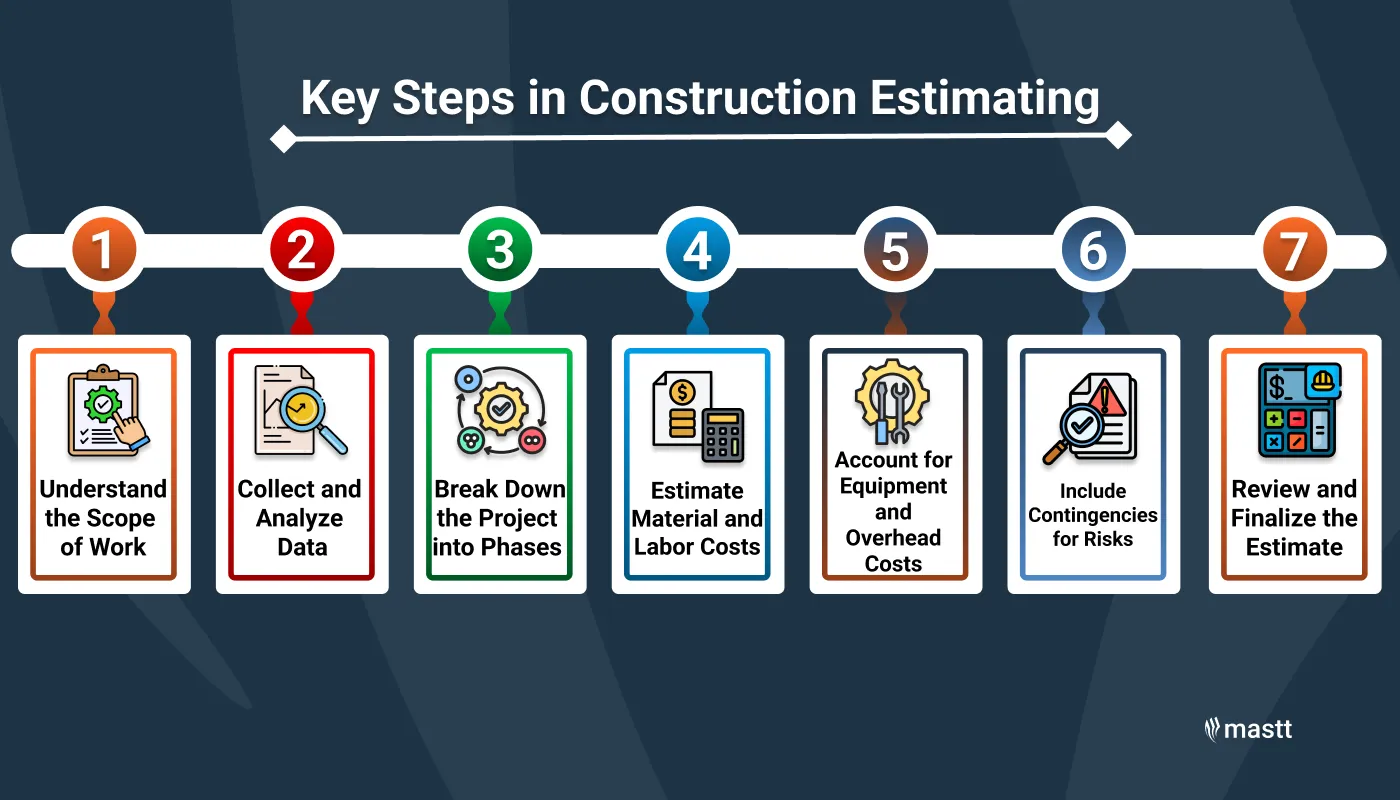How To Format A Construction EstimateNYC, USA
A well-structured construction estimate is essential for accurately predicting costs. It ensures financial stability and maintains transparency between clients and contractors. Whether for a small residential project or a large commercial build, an accurate estimate helps set expectations and prevents unforeseen expenses. A well-formatted construction estimate outlines labor, materials, permits, equipment, and other costs. Without proper formatting, misunderstandings can arise, leading to disputes or financial loss.
A precise estimate enhances professionalism and increases the chances of securing contracts. This blog post will explore how to format a construction estimate by breaking down essential components and best practices. By following a standardized approach, contractors can streamline the bidding process, build client trust, and ensure smooth project execution. Additionally, we will help you locate premium construction cost-estimating services in NYC. Let’s delve into the fundamental aspects of structuring a comprehensive and accurate construction estimate.
Understanding the Importance of a Construction Estimate
A construction estimate serves as a roadmap for any building project. It provides a detailed cost breakdown, helping clients make informed decisions. It also aids contractors in resource allocation and budget management. Accurate estimates prevent cost overruns, ensuring the project remains within financial constraints. An estimate minimizes risks and disputes by maintaining clarity and accuracy, fostering better client relationships.
Essential Components of a Construction Estimate
To guarantee thoroughness and precision, a construction estimate should encompass the following elements:
- Project name
- Location
- Client details
- Contractor information
- Detailed description of the work to be performed
- Specific tasks and responsibilities
- Timeline for project completion
- List of materials required
- Quantity and unit prices
- Breakdown of labor needed (e.g., carpenters, electricians, plumbers)
- Estimated hours and hourly rates
- Machinery and tools needed for the project
- Rental or purchase costs
- Maintenance expenses
- Required permits and associated costs
- Inspection fees and legal expenses
- Allocated funds for unforeseen expenses
- Typically, 5-10% of the total estimate
- Administrative expenses (e.g., office rent, utilities, insurance)
- Summation of all cost components
Step-by-Step Guide to Formatting a Construction Estimate
Construction estimation is a systematic process consisting of interconnected steps. Thus, when preparing an estimate, it’s important to proceed methodically. This approach will help you avoid mistakes or overestimating project costs. Let’s explore the detailed guide to formatting a construction estimate.
Step 1: Use a Standardized Template
A standardized format improves readability and professionalism. To maintain consistency, utilize software tools like Excel, QuickBooks, or construction estimating software.
Step 2: Clearly Define the Project Scope
A well-defined scope prevents miscommunication. Specify what is included and excluded to avoid scope creep.
Step 3: Categorize Costs Accurately
Segment costs into labor, materials, equipment, and permits. This transparency allows clients to see how their money is allocated.
Step 4: Use Unit Pricing
Break down costs using unit pricing (e.g., per square foot or hour). This approach simplifies calculations and facilitates cost comparisons.
Step 5: Include Contingency and Overhead Costs
Always allocate a contingency fund to cover unexpected expenses. Factor in overhead costs to ensure the business remains profitable.
Step 6: Provide a Clear Summary
Summarize key details, highlighting the final estimated cost and payment terms.
Step 7: Review and Validate
Double-check calculations to avoid errors. Ensure all necessary details are included before submitting the estimate to the client.
Common Mistakes to Avoid in Construction Estimates
Following the steps mentioned above, you can format your construction estimates flawlessly. However, there are a few things you need to take care of when formatting an estimate. To avoid these common mistakes, ensure you follow these guidelines.
- Underestimating costs lead to financial strain and project delays.
- Omitting critical details creates a lack of clarity that can lead to disputes.
- Failing to include a contingency budget means unexpected costs can derail a project.
- Ignoring labor and equipment costs compromises accurate pricing, essential for a reliable estimate.
- Not using a standard format results in inconsistencies that make it difficult for clients to understand the estimate.
Get Accurate Construction Estimates with My Virtual Estimator
My Virtual Estimator is the perfect solution for those looking for precise and dependable construction estimates. Their expert team specializes in providing comprehensive and accurate cost assessments for residential, commercial, and industrial projects. By utilizing advanced estimating software and extensive industry knowledge, they carefully calculate every cost element, including labor, materials, permits, and contingencies. This level of precision enables contractors and clients to make informed decisions, optimize budgets, and avoid financial setbacks. Whether you’re a contractor seeking a competitive edge in bidding or a client in need of a transparent expense breakdown, Allied Steel Services and My Virtual Estimator offers customized estimates tailored to your project’s specific needs. Their estimates follow industry best practices, ensuring clarity, professionalism, and efficiency. Don’t let budgeting uncertainties hinder your project. Reach out to My Virtual Estimator today to experience stress-free, accurate, and cost-effective construction estimation services in NYC. Let them help you keep your project on schedule and within budget!
Bottom Line:
A well-formatted construction estimate is a crucial tool for project planning and budgeting. It ensures transparency, accuracy, and professionalism in client-contractor relationships. Contractors can create reliable estimates that prevent financial setbacks and disputes by including all essential components such as labor, material, equipment costs, and contingencies. Proper formatting enhances readability and increases the chances of securing contracts. Additionally, using standardized templates and review processes helps maintain consistency and accuracy. Whether you are a contractor, project manager, or client, understanding how to structure a construction estimate is vital for successful project execution. These guidelines will lead to better financial planning and a smoother construction process. With an effective estimate, projects can be completed on time and within budget, fostering long-term success in the construction industry.
